The Discovery Discipline Methodology for Visiperf
The company
Visiperf is a company that focuses on helping networked businesses and brands with their digital marketing, particularly in a local context. They provides tools and services for local digital advertising, allowing brands to manage and customize advertising campaigns for their points of sale.
Project type: New feature on a marketplace plateformKey Skills: Product DiscoveryTimeframe: 6 months
Role : Product Designer
The Problem
Establishing Direction for Feature Development
The organization had identified the need for a key new feature, yet the absence of a structured approach to ideation and decision-making was a significant roadblock. My role was to help clarify this ambiguous starting point and provide a framework for confident progress.
Introduction
The F.O.C.U.S.E.D. framework is a structured, 7-step process designed to guide product discovery, created by Tristan Charvillat and Rémi Guyot. It's designed to promote incremental innovation and ensure that product development is aligned with user needs and business goals.
For each step we define a goal to achieve, a delivery and we organise workshops that will help us make the delivery granted.

Frame: Defining the Project Scope
Delivery - Project Ambition:
- Sucess Criteria: The impact we aim to achieve
- Damage control: The risk we are willing to take
- Timebox: The time we wish to dedicate to the project
What Workshops we’ve done
Reverse Brainstorming: Instead of directly brainstorming solutions, this workshop focuses on identifying potential problems, obstacles, or reasons why the project might fail.
Vision/Project Connection: This workshop aims to align the specific project with the broader company vision and strategic goals.
Observation of Metrics Over Time: Analyze existing relevant metrics and trends over a period to understand the current situation and identify opportunities or challenges.
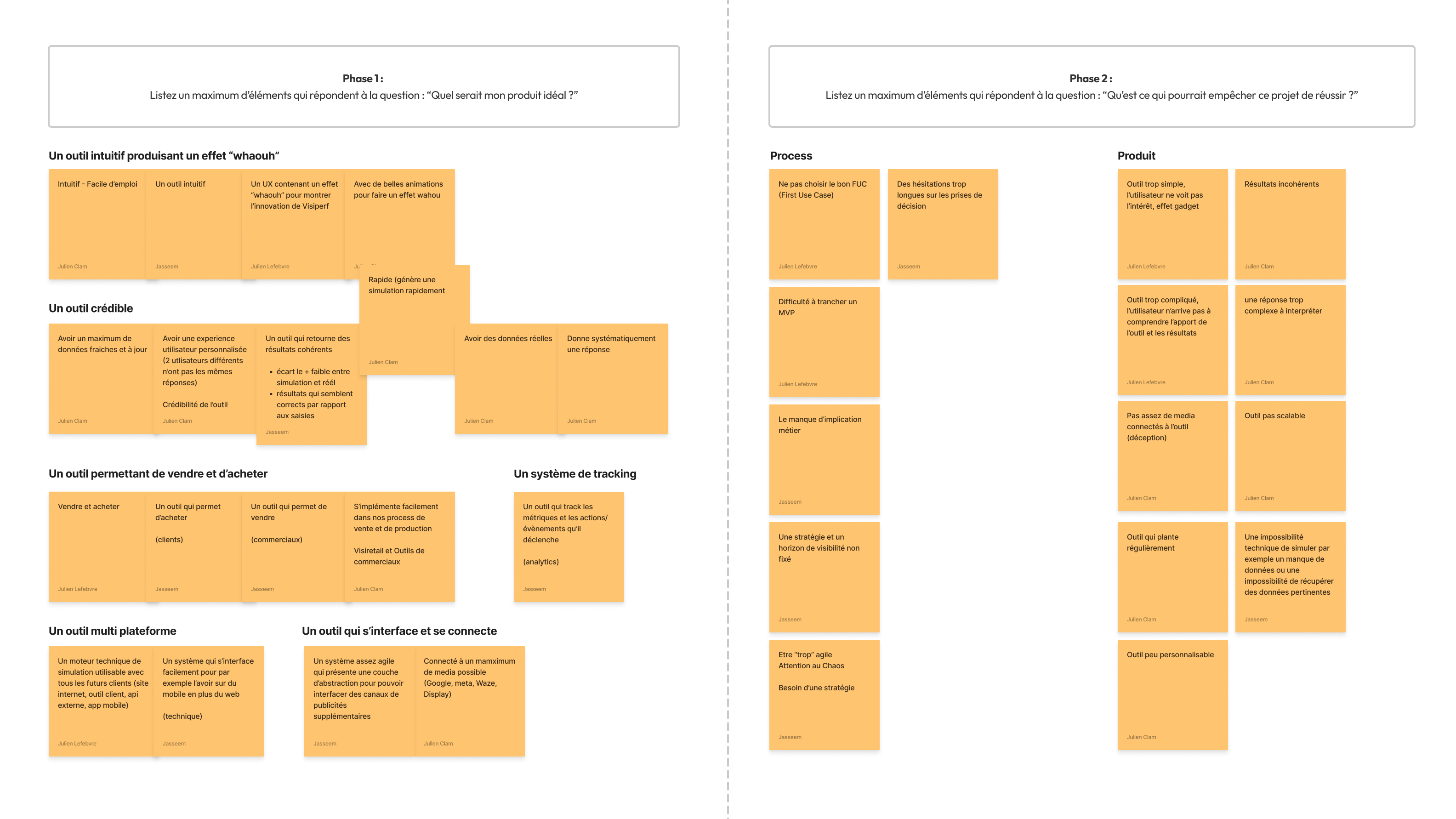
Workshop #1: Reverse Brainstorming
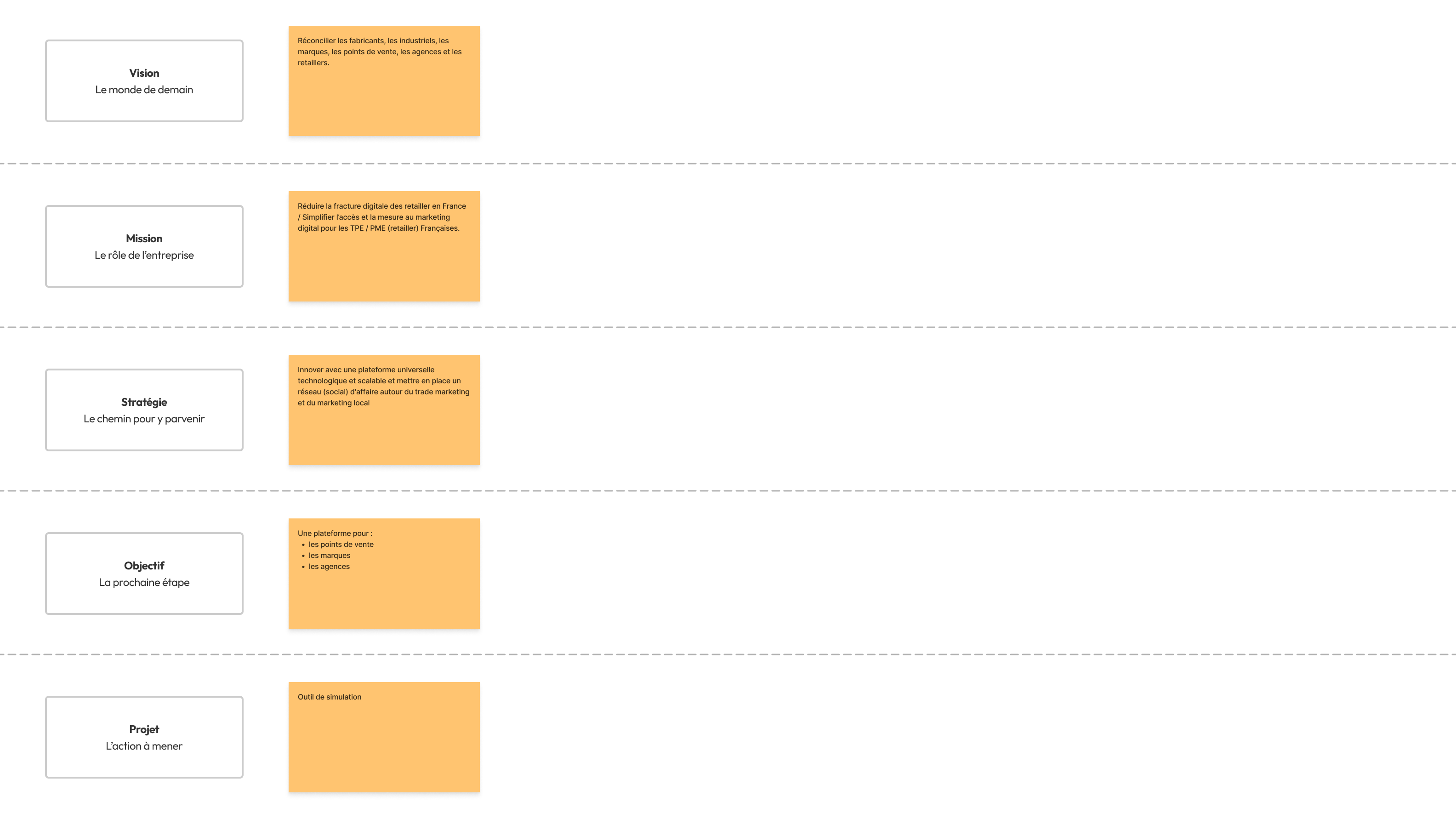
Workshop #2: Vision/Project Connection
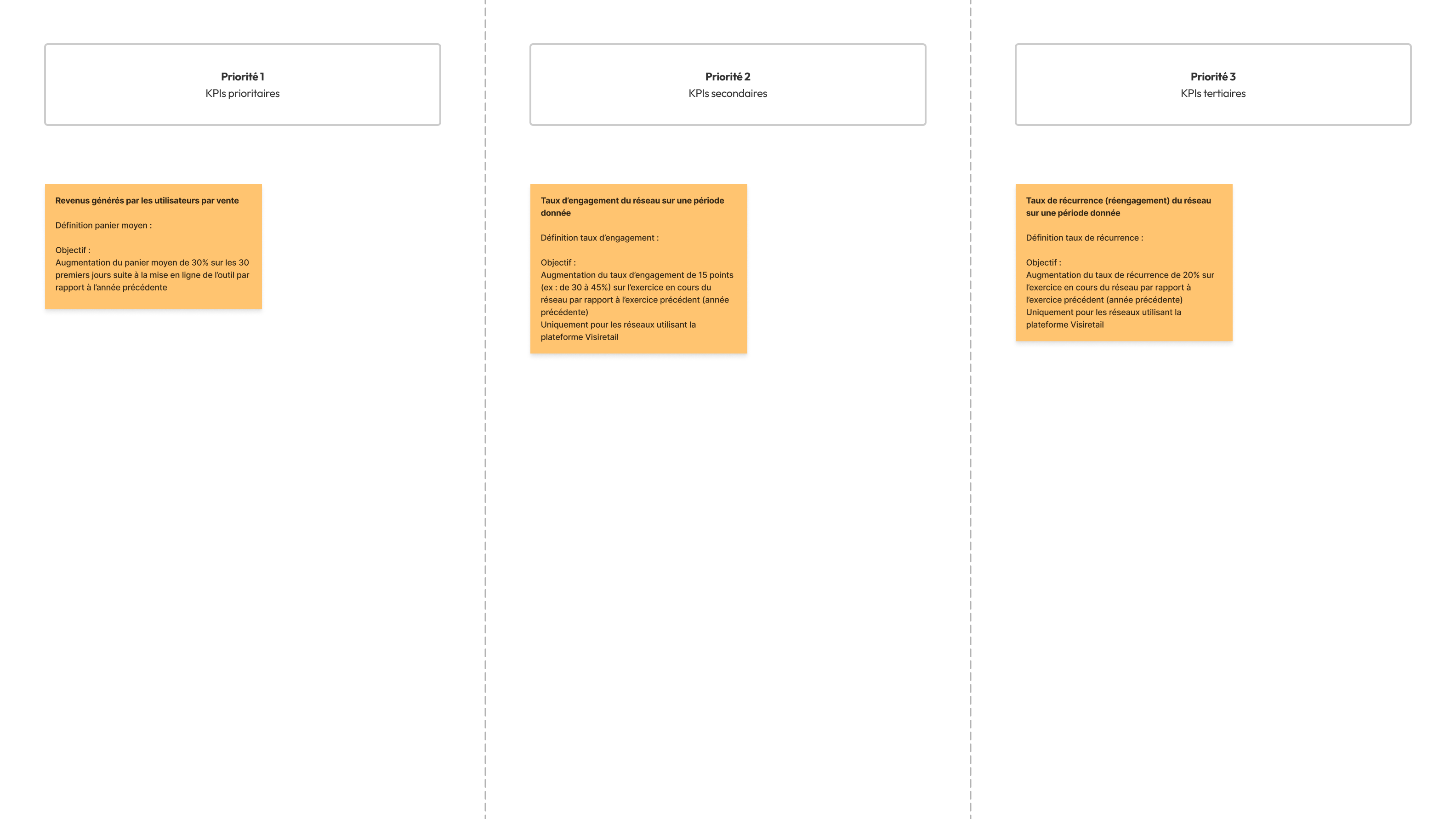
Workshop #3: Observation of Metrics Over Time
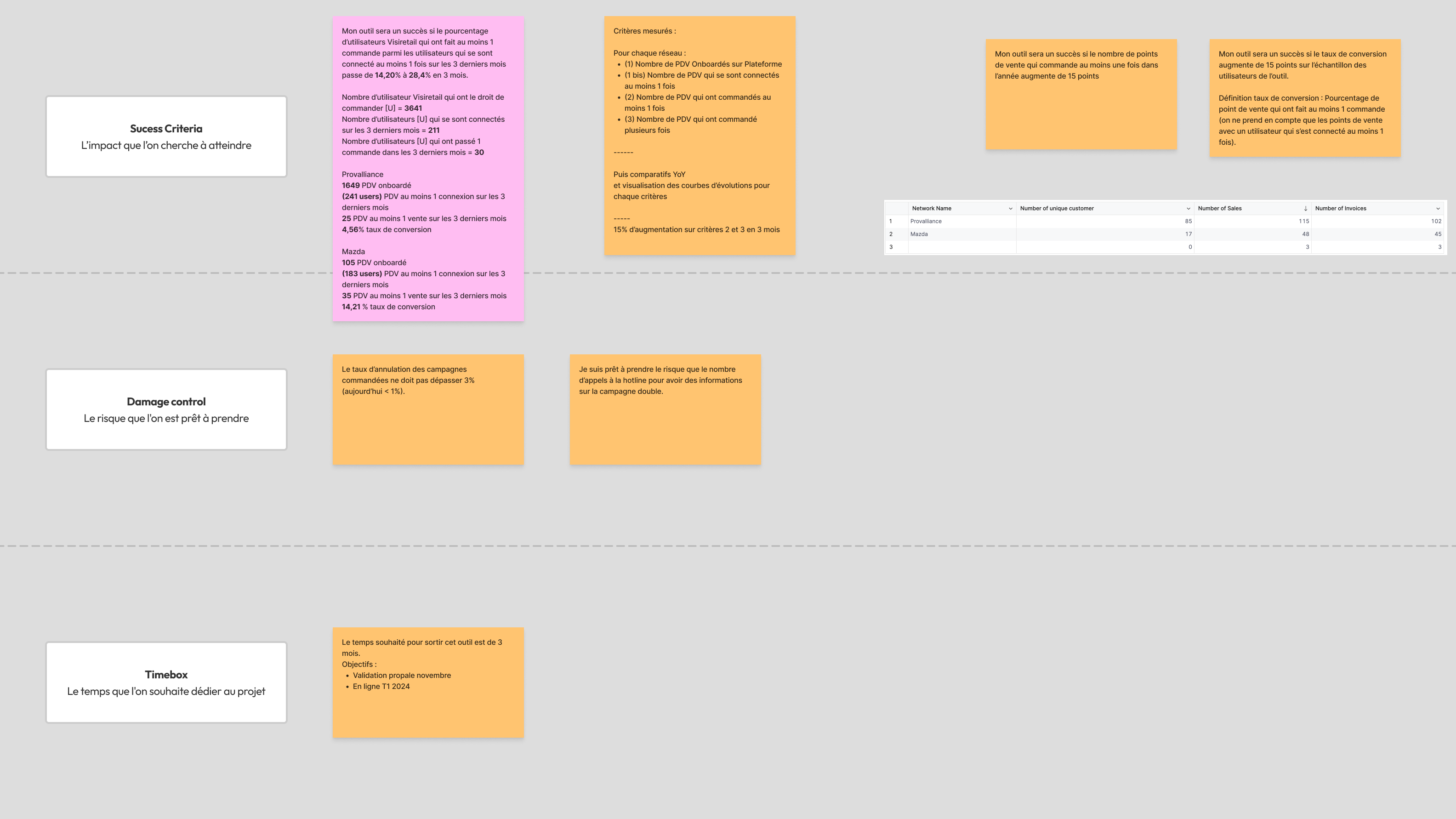
Delivery: Project Ambition:
Observe: Gathering User Insights
Delivery - First Use Case:
- I am: Target [User]
- And when: [Use Case]
- What matters most to me: [Need]
- But it turns out that: [Constraint]
- And therefore I must: [Workaround]
What Workshops we’ve done
Internal Stakeholder: Conduct individual or small group interviews with internal team members (e.g., sales, support, marketing, engineering) to understand their perspectives on user needs, pain points, and potential use cases.
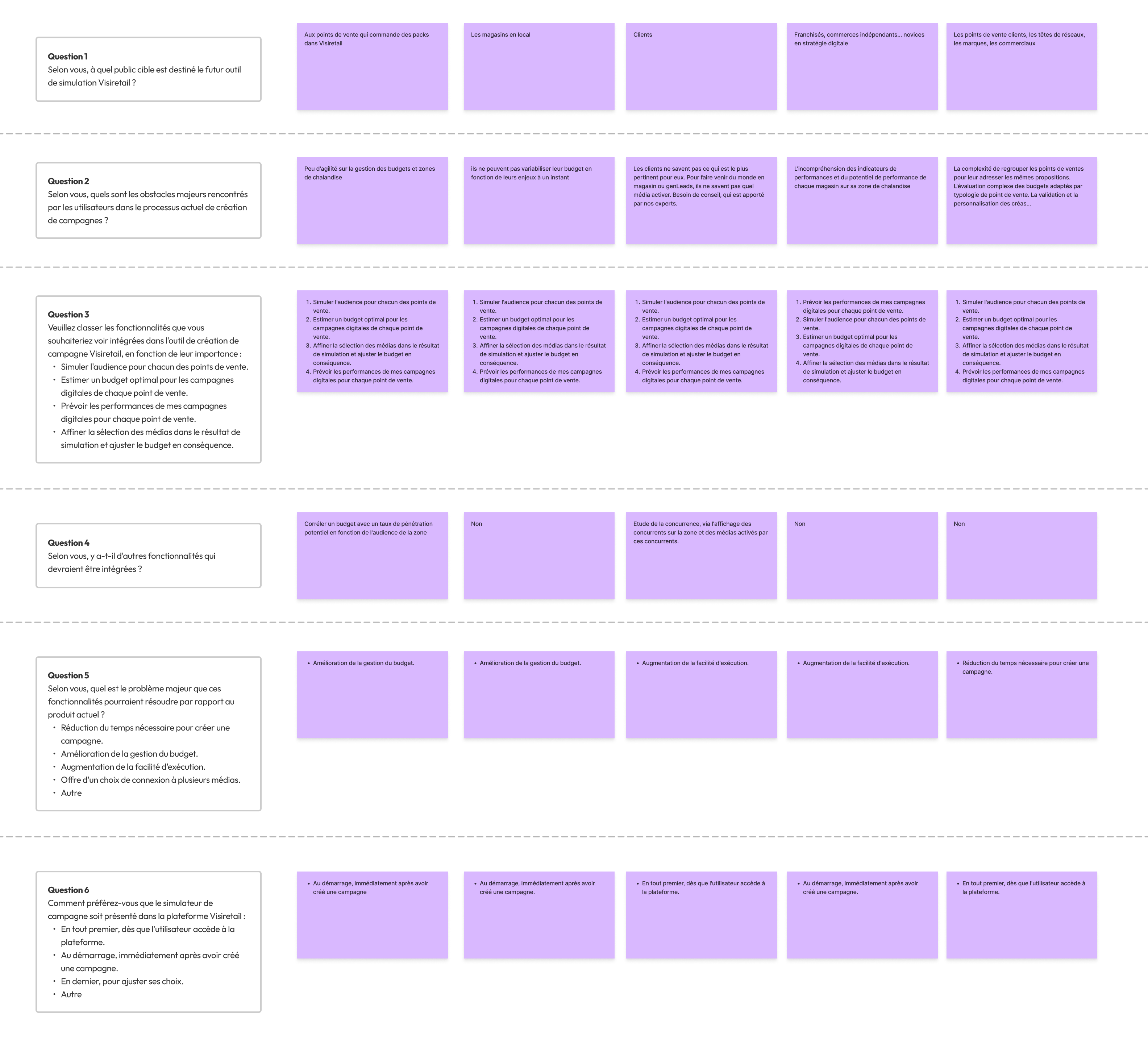
Workshop #1: Internal Stakeholder

Delivery: First Use Case
Co-create: Generating Solutions
Delivery - Launch Tweet:
Write a compelling story around the feature to be developed in Tweet format (maximum 280 characters)
What Workshops we’ve done
External Benchmark: Analyze competitors and other relevant products or services in the market to understand their positioning, messaging, and target audience.
Key Words: Brainstorm and identify the core keywords and phrases that best describe the product's value proposition and resonate with the target audience.

Workshop #1: External Benchmark

Workshop #2: Key Words
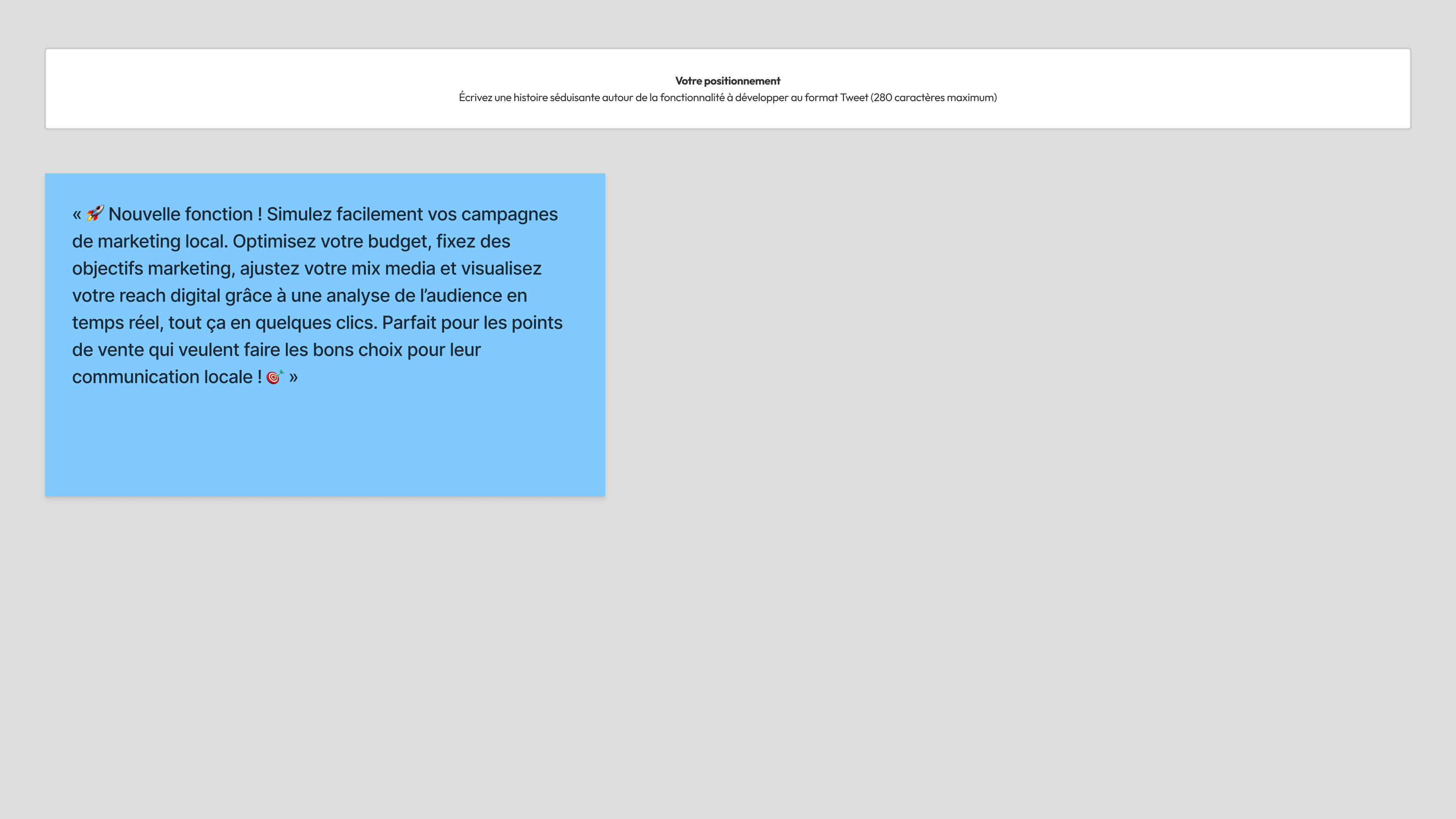
Delivery: Launch Tweet
Understand: Synthesizing Insights
Delivery - 5 touchpoints:
Define the important deliverables, those that reflect the key moments of the experience
What Workshops we’ve done
Before / After: Focus on the user's situation before interacting with the product and the desired situation after using it.

Workshop #1: Before / After
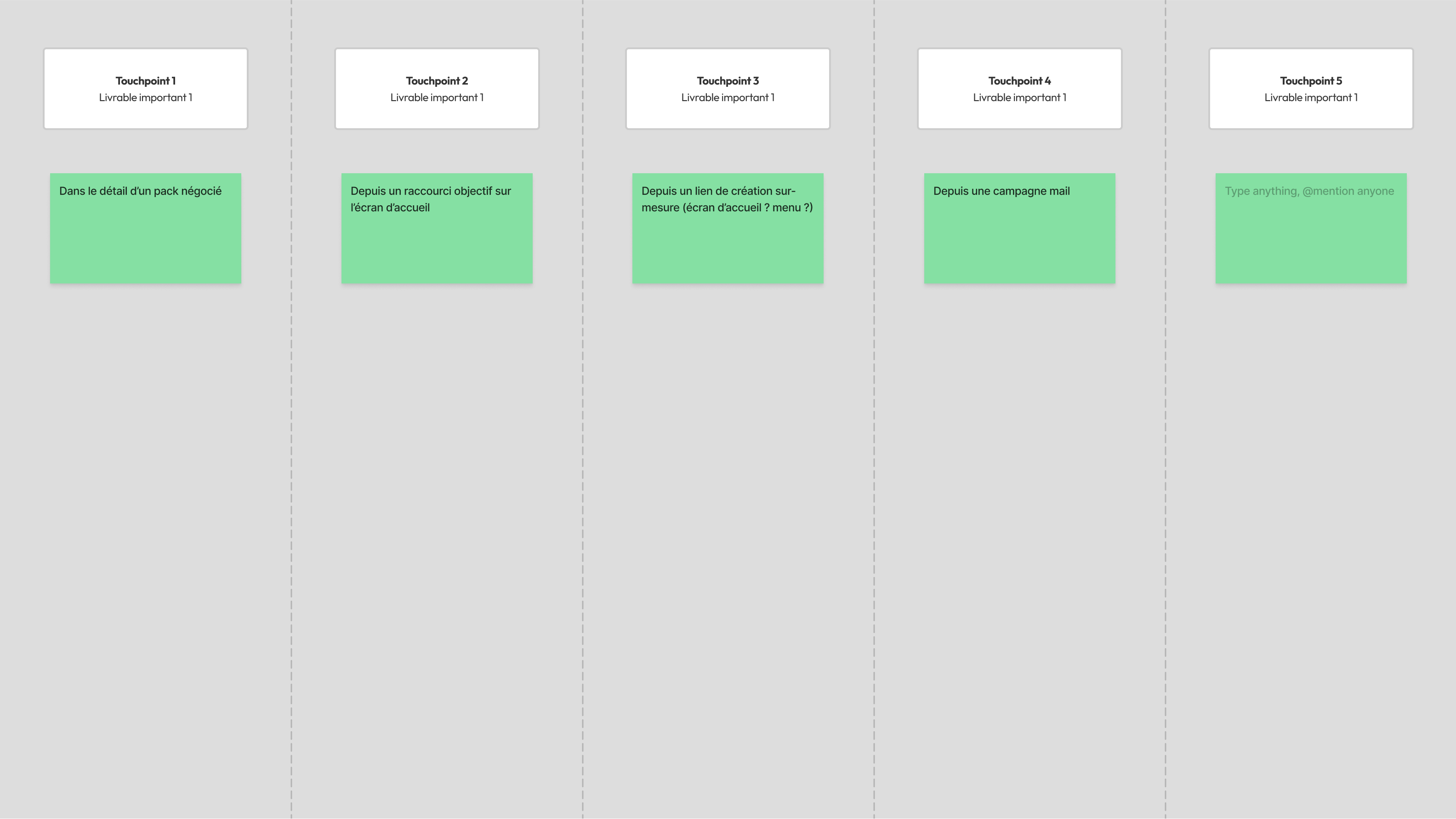
Delivery: 5 touchpoints
Solve: Prioritizing and Prototyping
Delivery - Gold nuggets:
Choose inspiring features that could address our problems
What Workshops we’ve done
Problem Decomposition: Break down the identified problem into smaller, more manageable sub-problems or components.

Workshop #1: Problem Decomposition
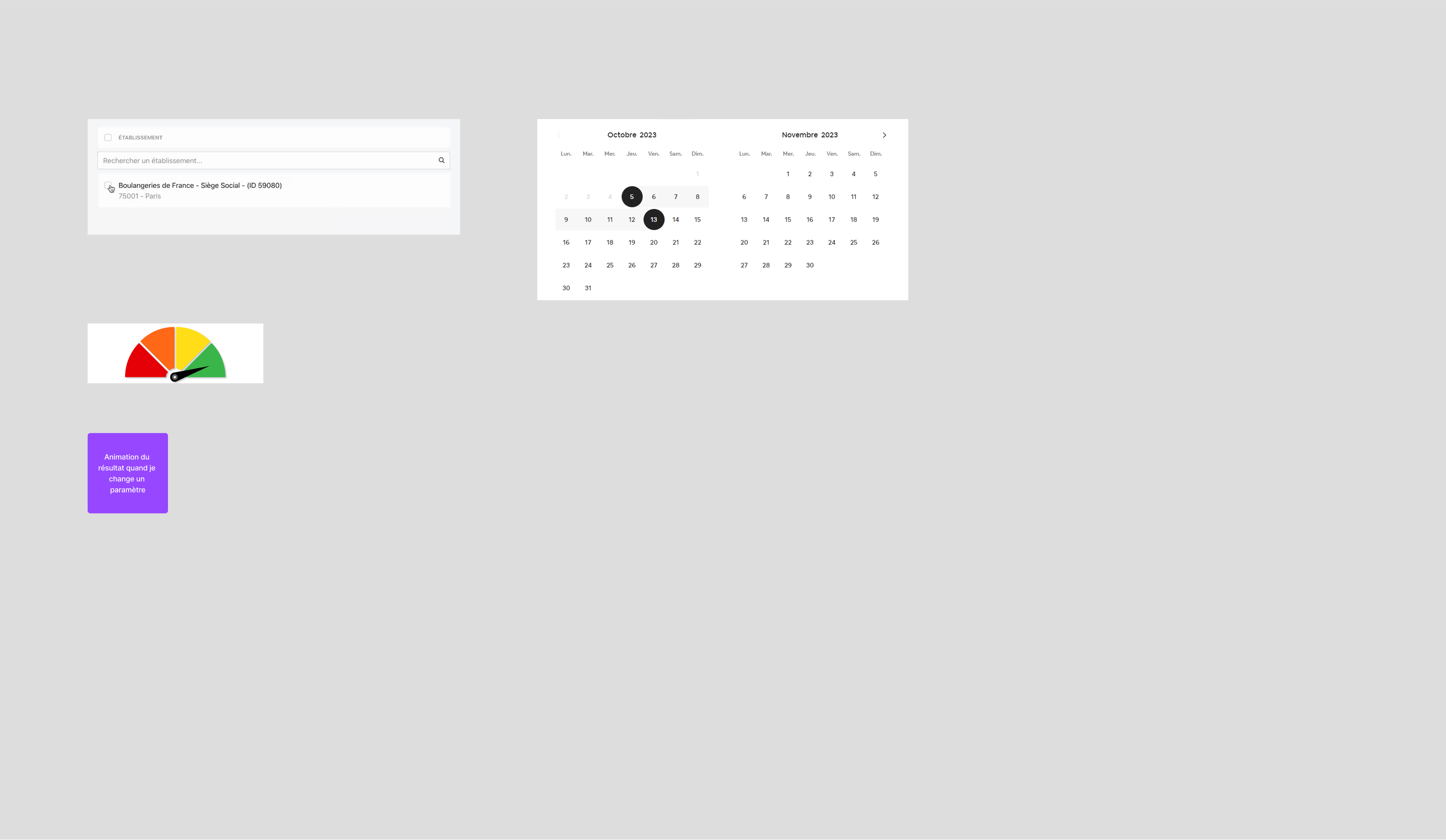
Delivery: Gold nuggets
Evaluate: Testing and Validating
Delivery - Happy Path:
Create a functional prototype accompanied by user hypotheses
What Workshops we’ve done
Prototyping : Create a functional prototype that demonstrates the core user flow (the "happy path") – the most common and successful way a user will achieve their primary goal with the product.
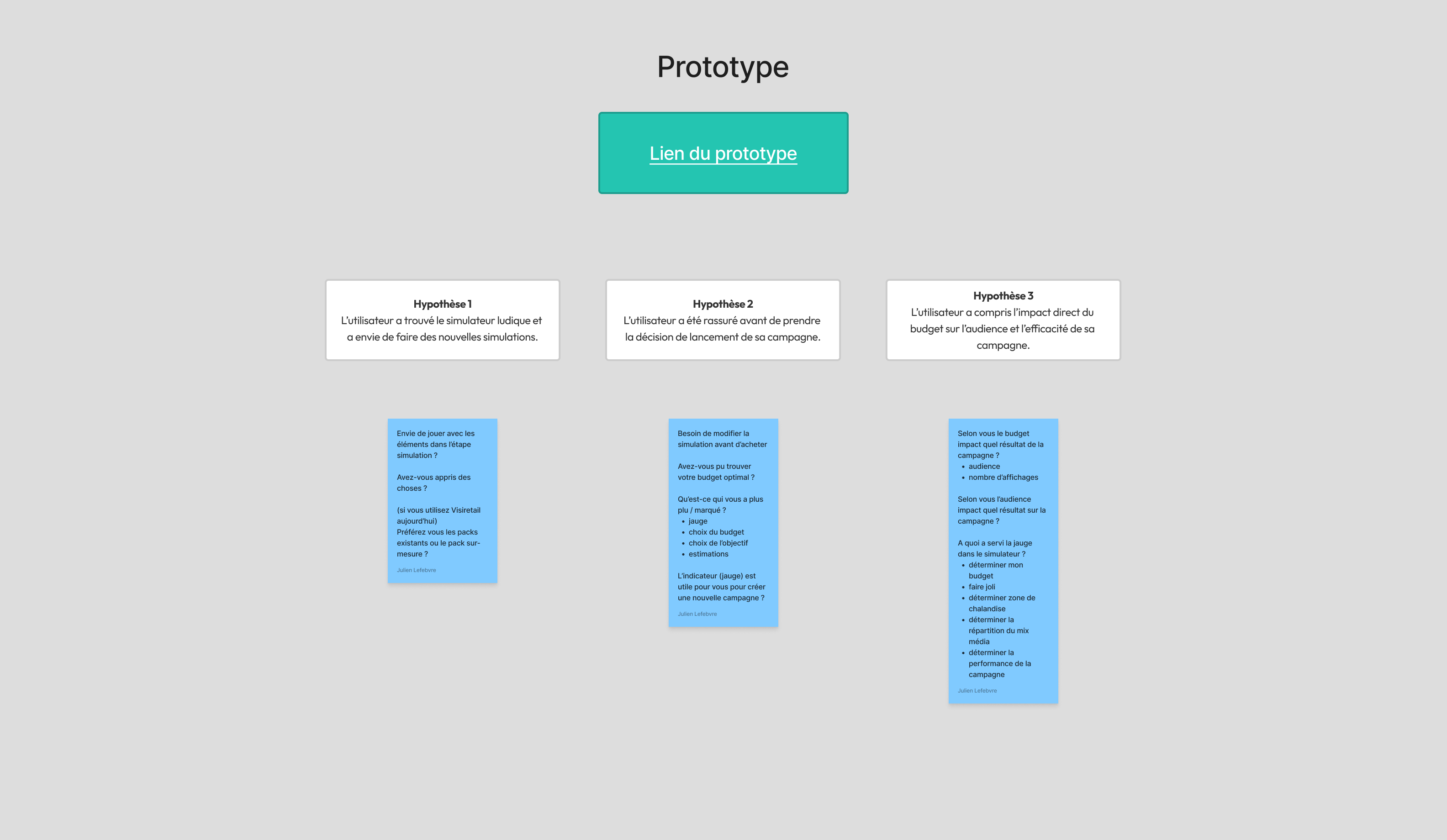
Delivery: Happy Path
Deploy: Implementing and Launching
Delivery - Go / No go:
Summarize user feedback and decide together whether the project should go into development
What Workshops we’ve done
Test prototype with key user: Conduct usability testing sessions with representative "key users" (individuals who closely match the target audience and their needs) to evaluate the prototype's effectiveness, usability, and overall quality.

Workshop #1: Test prototype with key user
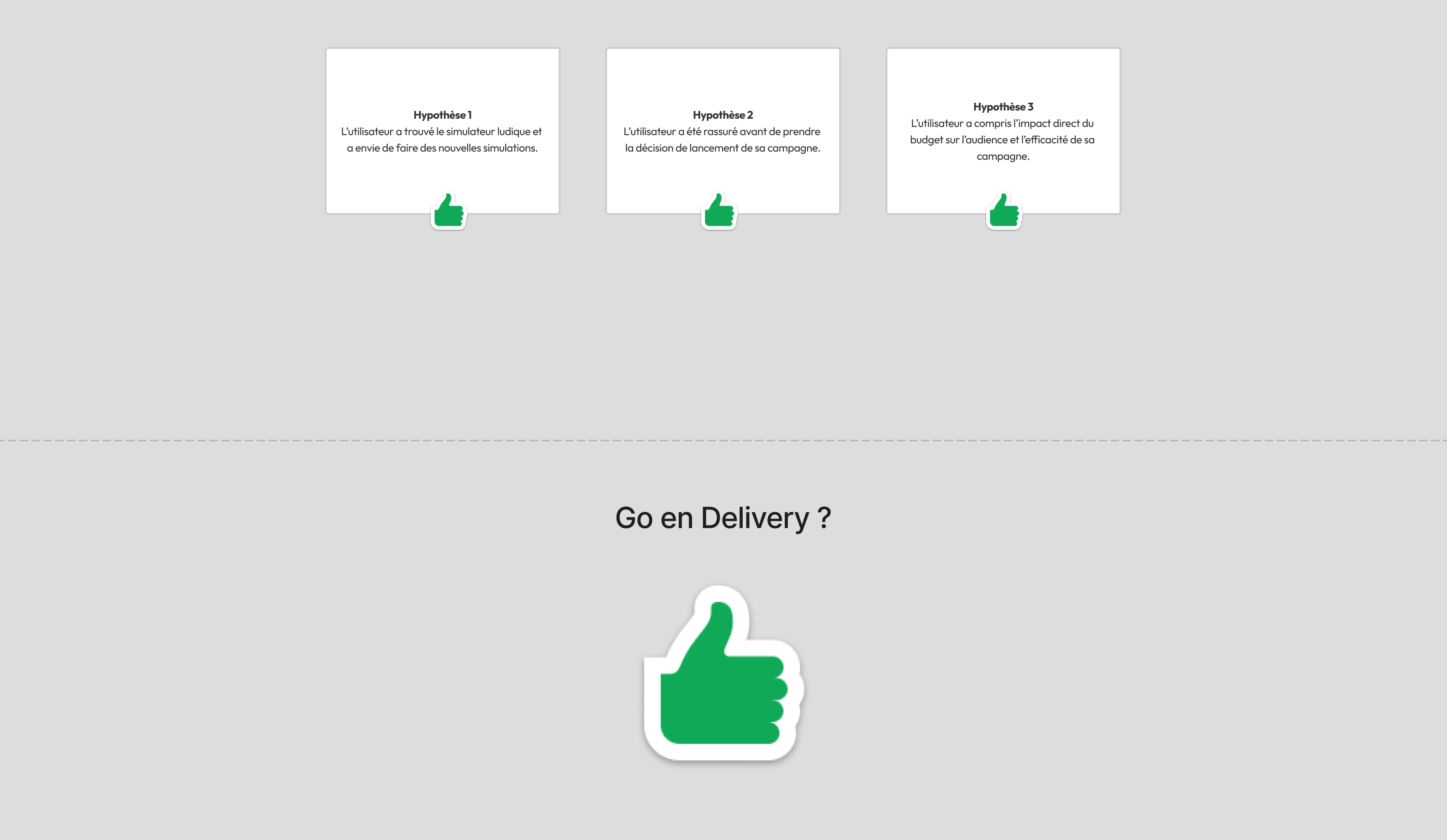
Delivery: Go / No go
Next project
An health & care gamification app for Ignilife.
Made with 🖤 ©2024
About
hello@jordangerard.fr
The Discovery Discipline Methodology for Visiperf
The company
Visiperf is a company that focuses on helping networked businesses and brands with their digital marketing, particularly in a local context. They provides tools and services for local digital advertising, allowing brands to manage and customize advertising campaigns for their points of sale.
Project type: New feature on a marketplace plateformKey Skills: Product DiscoveryTimeframe: 6 months
Role : Product Designer
The Problem
Establishing Direction for Feature Development
The organization had identified the need for a key new feature, yet the absence of a structured approach to ideation and decision-making was a significant roadblock. My role was to help clarify this ambiguous starting point and provide a framework for confident progress.
Introduction
The F.O.C.U.S.E.D. framework is a structured, 7-step process designed to guide product discovery, created by Tristan Charvillat and Rémi Guyot. It's designed to promote incremental innovation and ensure that product development is aligned with user needs and business goals.
For each step we define a goal to achieve, a delivery and we organise workshops that will help us make the delivery granted.

Frame: Defining the Project Scope
Delivery - Project Ambition:
- Sucess Criteria: The impact we aim to achieve
- Damage control: The risk we are willing to take
- Timebox: The time we wish to dedicate to the project
What Workshops we’ve done
Reverse Brainstorming: Instead of directly brainstorming solutions, this workshop focuses on identifying potential problems, obstacles, or reasons why the project might fail.
Vision/Project Connection: This workshop aims to align the specific project with the broader company vision and strategic goals.
Observation of Metrics Over Time: Analyze existing relevant metrics and trends over a period to understand the current situation and identify opportunities or challenges.

Workshop #1: Reverse Brainstorming

Workshop #2: Vision/Project Connection

Workshop #3: Observation of Metrics Over Time

Delivery: Project Ambition:
Observe: Gathering User Insights
Delivery - First Use Case:
- I am: Target [User]
- And when: [Use Case]
- What matters most to me: [Need]
- But it turns out that: [Constraint]
- And therefore I must: [Workaround]
What Workshops we’ve done
Internal Stakeholder: Conduct individual or small group interviews with internal team members (e.g., sales, support, marketing, engineering) to understand their perspectives on user needs, pain points, and potential use cases.

Workshop #1: Internal Stakeholder

Delivery: First Use Case
Co-create: Generating Solutions
Delivery - Launch Tweet:
Write a compelling story around the feature to be developed in Tweet format (maximum 280 characters)
What Workshops we’ve done
External Benchmark: Analyze competitors and other relevant products or services in the market to understand their positioning, messaging, and target audience.
Key Words: Brainstorm and identify the core keywords and phrases that best describe the product's value proposition and resonate with the target audience.

Workshop #1: External Benchmark

Workshop #2: Key Words

Delivery: Launch Tweet
Understand: Synthesizing Insights
Delivery - 5 touchpoints:
Define the important deliverables, those that reflect the key moments of the experience
What Workshops we’ve done
Before / After: Focus on the user's situation before interacting with the product and the desired situation after using it.

Workshop #1: Before / After

Delivery: 5 touchpoints
Solve: Prioritizing and Prototyping
Delivery - Gold nuggets:
Choose inspiring features that could address our problems
What Workshops we’ve done
Problem Decomposition: Break down the identified problem into smaller, more manageable sub-problems or components.

Workshop #1: Problem Decomposition

Delivery: Gold nuggets
Evaluate: Testing and Validating
Delivery - Happy Path:
Create a functional prototype accompanied by user hypotheses
What Workshops we’ve done
Prototyping : Create a functional prototype that demonstrates the core user flow (the "happy path") – the most common and successful way a user will achieve their primary goal with the product.

Delivery: Happy Path
Deploy: Implementing and Launching
Delivery - Go / No go:
Summarize user feedback and decide together whether the project should go into development
What Workshops we’ve done
Test prototype with key user: Conduct usability testing sessions with representative "key users" (individuals who closely match the target audience and their needs) to evaluate the prototype's effectiveness, usability, and overall quality.

Workshop #1: Test prototype with key user

Delivery: Go / No go
Next project
An health & care gamification app for Ignilife.
Made with 🖤 ©2024
About
hello@jordangerard.fr
The Discovery Discipline Methodology for Visiperf
The company
Visiperf is a company that focuses on helping networked businesses and brands with their digital marketing, particularly in a local context. They provides tools and services for local digital advertising, allowing brands to manage and customize advertising campaigns for their points of sale.
Project type: New feature on a marketplace plateformKey Skills: Product DiscoveryTimeframe: 6 months
Role : Product Designer
The Problem
Establishing Direction for Feature Development
The organization had identified the need for a key new feature, yet the absence of a structured approach to ideation and decision-making was a significant roadblock. My role was to help clarify this ambiguous starting point and provide a framework for confident progress.
Introduction
The F.O.C.U.S.E.D. framework is a structured, 7-step process designed to guide product discovery, created by Tristan Charvillat and Rémi Guyot. It's designed to promote incremental innovation and ensure that product development is aligned with user needs and business goals.
For each step we define a goal to achieve, a delivery and we organise workshops that will help us make the delivery granted.

Frame: Defining the Project Scope
Delivery - Project Ambition:
- Sucess Criteria: The impact we aim to achieve
- Damage control: The risk we are willing to take
- Timebox: The time we wish to dedicate to the project
What Workshops we’ve done
Reverse Brainstorming: Instead of directly brainstorming solutions, this workshop focuses on identifying potential problems, obstacles, or reasons why the project might fail.
Vision/Project Connection: This workshop aims to align the specific project with the broader company vision and strategic goals.
Observation of Metrics Over Time: Analyze existing relevant metrics and trends over a period to understand the current situation and identify opportunities or challenges.

Workshop #1: Reverse Brainstorming

Workshop #2: Vision/Project Connection

Workshop #3: Observation of Metrics Over Time

Delivery: Project Ambition:
Observe: Gathering User Insights
Delivery - First Use Case:
- I am: Target [User]
- And when: [Use Case]
- What matters most to me: [Need]
- But it turns out that: [Constraint]
- And therefore I must: [Workaround]
What Workshops we’ve done
Internal Stakeholder: Conduct individual or small group interviews with internal team members (e.g., sales, support, marketing, engineering) to understand their perspectives on user needs, pain points, and potential use cases.

Workshop #1: Internal Stakeholder

Delivery: First Use Case
Co-create: Generating Solutions
Delivery - Launch Tweet:
Write a compelling story around the feature to be developed in Tweet format (maximum 280 characters)
What Workshops we’ve done
External Benchmark: Analyze competitors and other relevant products or services in the market to understand their positioning, messaging, and target audience.
Key Words: Brainstorm and identify the core keywords and phrases that best describe the product's value proposition and resonate with the target audience.

Workshop #1: External Benchmark

Workshop #2: Key Words

Delivery: Launch Tweet
Understand: Synthesizing Insights
Delivery - 5 touchpoints:
Define the important deliverables, those that reflect the key moments of the experience
What Workshops we’ve done
Before / After: Focus on the user's situation before interacting with the product and the desired situation after using it.

Workshop #1: Before / After

Delivery: 5 touchpoints
Solve: Prioritizing and Prototyping
Delivery - Gold nuggets:
Choose inspiring features that could address our problems
What Workshops we’ve done
Problem Decomposition: Break down the identified problem into smaller, more manageable sub-problems or components.

Workshop #1: Problem Decomposition

Delivery: Gold nuggets
Evaluate: Testing and Validating
Delivery - Happy Path:
Create a functional prototype accompanied by user hypotheses
What Workshops we’ve done
Prototyping : Create a functional prototype that demonstrates the core user flow (the "happy path") – the most common and successful way a user will achieve their primary goal with the product.

Delivery: Happy Path
Deploy: Implementing and Launching
Delivery - Go / No go:
Summarize user feedback and decide together whether the project should go into development
What Workshops we’ve done
Test prototype with key user: Conduct usability testing sessions with representative "key users" (individuals who closely match the target audience and their needs) to evaluate the prototype's effectiveness, usability, and overall quality.

Workshop #1: Test prototype with key user

Delivery: Go / No go
Next project
An health & care gamification app for Ignilife.
Made with 🖤 ©2024
About
hello@jordangerard.fr
The Discovery Discipline Methodology for Visiperf
The company
Visiperf is a company that focuses on helping networked businesses and brands with their digital marketing, particularly in a local context. They provides tools and services for local digital advertising, allowing brands to manage and customize advertising campaigns for their points of sale.
Project type: New feature on a marketplace plateformKey Skills: Product DiscoveryTimeframe: 6 months
Role : Product Designer
The Problem
Establishing Direction for Feature Development
The organization had identified the need for a key new feature, yet the absence of a structured approach to ideation and decision-making was a significant roadblock. My role was to help clarify this ambiguous starting point and provide a framework for confident progress.
Introduction
The F.O.C.U.S.E.D. framework is a structured, 7-step process designed to guide product discovery, created by Tristan Charvillat and Rémi Guyot. It's designed to promote incremental innovation and ensure that product development is aligned with user needs and business goals.
For each step we define a goal to achieve, a delivery and we organise workshops that will help us make the delivery granted.

Frame: Defining the Project Scope
Delivery - Project Ambition:
- Sucess Criteria: The impact we aim to achieve
- Damage control: The risk we are willing to take
- Timebox: The time we wish to dedicate to the project
What Workshops we’ve done
Reverse Brainstorming: Instead of directly brainstorming solutions, this workshop focuses on identifying potential problems, obstacles, or reasons why the project might fail.
Vision/Project Connection: This workshop aims to align the specific project with the broader company vision and strategic goals.
Observation of Metrics Over Time: Analyze existing relevant metrics and trends over a period to understand the current situation and identify opportunities or challenges.

Workshop #1: Reverse Brainstorming

Workshop #2: Vision/Project Connection

Workshop #3: Observation of Metrics Over Time

Delivery: Project Ambition:
Observe: Gathering User Insights
Delivery - First Use Case:
- I am: Target [User]
- And when: [Use Case]
- What matters most to me: [Need]
- But it turns out that: [Constraint]
- And therefore I must: [Workaround]
What Workshops we’ve done
Internal Stakeholder: Conduct individual or small group interviews with internal team members (e.g., sales, support, marketing, engineering) to understand their perspectives on user needs, pain points, and potential use cases.

Workshop #1: Internal Stakeholder

Delivery: First Use Case
Co-create: Generating Solutions
Delivery - Launch Tweet:
Write a compelling story around the feature to be developed in Tweet format (maximum 280 characters)
What Workshops we’ve done
External Benchmark: Analyze competitors and other relevant products or services in the market to understand their positioning, messaging, and target audience.
Key Words: Brainstorm and identify the core keywords and phrases that best describe the product's value proposition and resonate with the target audience.

Workshop #1: External Benchmark

Workshop #2: Key Words

Delivery: Launch Tweet
Understand: Synthesizing Insights
Delivery - 5 touchpoints:
Define the important deliverables, those that reflect the key moments of the experience
What Workshops we’ve done
Before / After: Focus on the user's situation before interacting with the product and the desired situation after using it.

Workshop #1: Before / After

Delivery: 5 touchpoints
Solve: Prioritizing and Prototyping
Delivery - Gold nuggets:
Choose inspiring features that could address our problems
What Workshops we’ve done
Problem Decomposition: Break down the identified problem into smaller, more manageable sub-problems or components.

Workshop #1: Problem Decomposition

Delivery: Gold nuggets
Evaluate: Testing and Validating
Delivery - Happy Path:
Create a functional prototype accompanied by user hypotheses
What Workshops we’ve done
Prototyping : Create a functional prototype that demonstrates the core user flow (the "happy path") – the most common and successful way a user will achieve their primary goal with the product.

Delivery: Happy Path
Deploy: Implementing and Launching
Delivery - Go / No go:
Summarize user feedback and decide together whether the project should go into development
What Workshops we’ve done
Test prototype with key user: Conduct usability testing sessions with representative "key users" (individuals who closely match the target audience and their needs) to evaluate the prototype's effectiveness, usability, and overall quality.

Workshop #1: Test prototype with key user

Delivery: Go / No go
Next project
An health & care gamification app for Ignilife.
Made with 🖤 ©2024
About
hello@jordangerard.fr